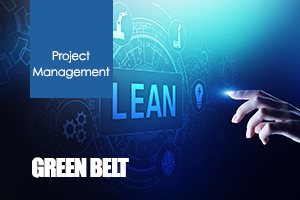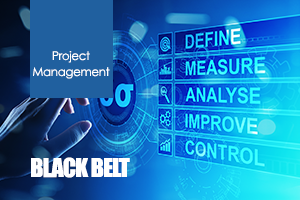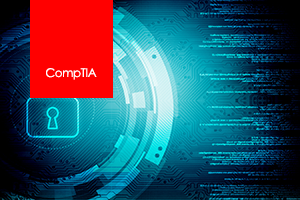
20 hours 26 minutes |
|
55 Course Videos |
|
59 Test Questions |
A process is a means of creating and delivering products and services needed by customers. According to Takashi Osada, Japanese author and quality pioneer, “if the process is right, the results will take care of themselves.” By Six Sigma standards, a “right process” is one that creates and delivers precisely what the customer needs. By this logic, no Six Sigma effort can start without having a high-level picture of an organization’s customers and other stakeholders, their needs, and the business processes meant to fulfill those needs. A thorough analysis of the existing business processes – and the products and services they churn out – is the first step in Six Sigma projects. You need to listen to the “voice of the customer” to find out what customers need, identify opportunities for change and improvement, and translate customer needs into goals and customer deliverables. In this course, learners will examine how to analyse process components and stakeholders in an organization. They will also learn about concepts and tools for collecting and analyzing customer information and feedback.
- Introduction
- Six Sigma And The Organization Goals-Part 1
- Six Sigma And The Organization Goals-Part 2
- Lean Principles In The Organization
- Design For Six Sigma
- Define Phase-Project Identification-Part 1
- Define Phase-Project Identification-Part 2
- Define Phase-Project Identification-Part 3
- Define Phase-Voice Of The Customer-Part 1
- Define Phase-Voice Of The Customer-Part 2
- Define Phase-Project Management Basics-Part 1
- Define Phase-Project Management Basics-Part 2
- Define Phase-Management And Planning Tools-Part 1
- Define Phase-Management And Planning Tools-Part 2
- Define Phase-Business Results For Projects-Part 1
- Define Phase-Business Results For Projects-Part 2
- Define Phase-Team Dynamics And Review Questions
- Define Phase-Summary And Review Questions
- Measure Phase-Process Analysis And Documentation
- Measure Phase-Probability And Statistics
- Measure Phase-Statistical Distributions
- Measure Phase-Collecting And Summarizing Data-Part 1
- Measure Phase-Collecting And Summarizing Data-Part 2
- Measure Phase-Measurements System Analysis(MSA)
- Measure Phase-Process And Performance Capability And Measure Phase Summary And Review
- Analyze Phase-Exploratory Data Analysis And Hypothesis Testing-Part1
- Analyze Phase-Exploratory Data Analysis And Hypothesis Testing-Part2
- Analyze Phase-Exploratory Data Analysis And Hypothesis Testing-Part3
- Analyze Phase-Process Drivers-Part 1
- Analyze Phase-Process Drivers-Part 2
- Analyze Phase-Process Drivers-Part 3
- Analyze Phase-Process Drivers-Part 4
- Analyze Phase-Process Drivers-Part 5
- Improve Phase-Design Of Experiment(DOE)-Part 1
- Improve Phase-Design Of Experiment(DOE)-Part 2
- Improve Phase-Root Cause Analysis-Part 1
- Improve Phase-Root Cause Analysis-Part 2
- Improve Phase-Root Cause Analysis-Demo
- Improve Phase-Lean Tools-Part 1
- Improve Phase-Lean Tools-Part 2
- Improve Phase-Lean Tools-Part 3
- Improve Phase-Lean Tools-Part 4
- Control Phase-Statistical Process Control
- Control Phase-Lean Tools For Process Control-Part 1
- Control Phase-Lean Tools For Process Control-Part 2
- Control Phase-Lean Tools For Process Control-Part 3
- Exam Review And Key Concepts-Part 1
- Exam Review And Key Concepts-Part 2
- Exam Review And Key Concepts-Part 3
- Exam Review And Key Concepts-Part 4
- Exam Review And Key Concepts-Part 5
- Exam Review And Key Concepts-Part 6
- Exam Review And Key Concepts-Part 7
- Exam Review-Flash Cards
- Conclusion
Description
A process is a means of creating and delivering products and services needed by customers. According to Takashi Osada, Japanese author and quality pioneer, “if the process is right, the results will take care of themselves.” By Six Sigma standards, a “right process” is one that creates and delivers precisely what the customer needs. By this logic, no Six Sigma effort can start without having a high-level picture of an organization’s customers and other stakeholders, their needs, and the business processes meant to fulfill those needs. A thorough analysis of the existing business processes – and the products and services they churn out – is the first step in Six Sigma projects. You need to listen to the “voice of the customer” to find out what customers need, identify opportunities for change and improvement, and translate customer needs into goals and customer deliverables. In this course, learners will examine how to analyse process components and stakeholders in an organization. They will also learn about concepts and tools for collecting and analyzing customer information and feedback.
- Introduction
- Six Sigma And The Organization Goals-Part 1
- Six Sigma And The Organization Goals-Part 2
- Lean Principles In The Organization
- Design For Six Sigma
- Define Phase-Project Identification-Part 1
- Define Phase-Project Identification-Part 2
- Define Phase-Project Identification-Part 3
- Define Phase-Voice Of The Customer-Part 1
- Define Phase-Voice Of The Customer-Part 2
- Define Phase-Project Management Basics-Part 1
- Define Phase-Project Management Basics-Part 2
- Define Phase-Management And Planning Tools-Part 1
- Define Phase-Management And Planning Tools-Part 2
- Define Phase-Business Results For Projects-Part 1
- Define Phase-Business Results For Projects-Part 2
- Define Phase-Team Dynamics And Review Questions
- Define Phase-Summary And Review Questions
- Measure Phase-Process Analysis And Documentation
- Measure Phase-Probability And Statistics
- Measure Phase-Statistical Distributions
- Measure Phase-Collecting And Summarizing Data-Part 1
- Measure Phase-Collecting And Summarizing Data-Part 2
- Measure Phase-Measurements System Analysis(MSA)
- Measure Phase-Process And Performance Capability And Measure Phase Summary And Review
- Analyze Phase-Exploratory Data Analysis And Hypothesis Testing-Part1
- Analyze Phase-Exploratory Data Analysis And Hypothesis Testing-Part2
- Analyze Phase-Exploratory Data Analysis And Hypothesis Testing-Part3
- Analyze Phase-Process Drivers-Part 1
- Analyze Phase-Process Drivers-Part 2
- Analyze Phase-Process Drivers-Part 3
- Analyze Phase-Process Drivers-Part 4
- Analyze Phase-Process Drivers-Part 5
- Improve Phase-Design Of Experiment(DOE)-Part 1
- Improve Phase-Design Of Experiment(DOE)-Part 2
- Improve Phase-Root Cause Analysis-Part 1
- Improve Phase-Root Cause Analysis-Part 2
- Improve Phase-Root Cause Analysis-Demo
- Improve Phase-Lean Tools-Part 1
- Improve Phase-Lean Tools-Part 2
- Improve Phase-Lean Tools-Part 3
- Improve Phase-Lean Tools-Part 4
- Control Phase-Statistical Process Control
- Control Phase-Lean Tools For Process Control-Part 1
- Control Phase-Lean Tools For Process Control-Part 2
- Control Phase-Lean Tools For Process Control-Part 3
- Exam Review And Key Concepts-Part 1
- Exam Review And Key Concepts-Part 2
- Exam Review And Key Concepts-Part 3
- Exam Review And Key Concepts-Part 4
- Exam Review And Key Concepts-Part 5
- Exam Review And Key Concepts-Part 6
- Exam Review And Key Concepts-Part 7
- Exam Review-Flash Cards
- Conclusion
Additional information
20 hours 26 minutes |
|
55 Course Videos |
|
59 Test Questions |
You may also like…
-
Read more
Information Technology Infrastructure Library (ITIL®) – Service Operation
10 hours 2 minutes
35 Course Videos
100 Test Questions
Service Operation focuses on delivery and control process activities and aims for a steady state of managing services In... -
Read more
Six Sigma Black Belt

21 hours 4 minutes
50 Course Videos
59 Test Questions
Six Sigma is a data-driven improvement philosophy that views all activities within an organization as processes whose inputs...
-
Read more
Information Technology Infrastructure Library (ITIL Foundations V3)

8 hours 10 minutes
60 Course Videos
60 Prep Questions
This ITIL® Foundation course covers the IT Infrastructure Library best practices ITIL® is globally accepted as the most...






